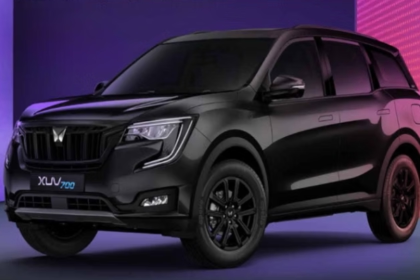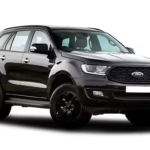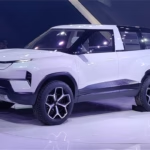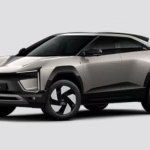Introduction
VinFast’s vibrant subsidiary of Vietnamese conglomerate Vingroup is one of the most aggressive and quickest trajectories in contemporary automotive history. It was only established in 2017, and the company started with internal combustion engine (ICE) vehicles, splashing the 2018 Paris Motor Show.
Ever since that shift, VinFast has quickly grown to expand its international presence, opening operations in major automotive markets — the United States, Europe, and Southeast Asia — and now targeting the fast-changing Indian auto landscape.
India, home to more than 1.4 billion people, is the world’s fourth-largest car market in terms of volume. Urbanization, increased income levels, and increasing environmental consciousness are driving a change in consumer trends, but the adoption of EVs has been slow.
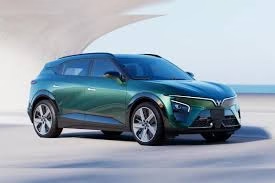
- But things are about to shift very quickly.
According to recent projections by various industry research agencies and government reports, EV penetration in India’s four-wheeler market is likely to grow to about 10% by 2025, spurred by an intersection of policy favor, better technology, declining battery prices, and evolving perception. The Indian government’s incentives under FAME II, PLI programs, and state-level EV policies aim to hasten this transition.
- It is this tipping point that VinFast aims to capitalize on.
VinFast’s move into India, announced officially at the Bharat Mobility Global Expo 2024, is more than a mere expansion; it’s a declaration of intent. Their strategy features the introduction of high-end electric SUVs like the VF 7 and then mass-market electric vehicles like the VF 3, which may disrupt the compact urban car market dominated by legacy players.
But VinFast’s vision extends beyond car sales. It plans to develop a complete EV ecosystem, ranging from local component supply and dealer networks to charging infrastructure through its subsidiary company, V-Green. The group is also venturing into EV fleet solutions, battery production, and even electric two-wheelers and buses, demonstrating a long-term perspective adapted to India’s varied mobility requirements.
VinFast comes to India when legacy automakers and new players alike are redefining their plans for an electric future. Tata Motors, MG, BYD, and Hyundai are beefing up their EV offerings, while international disruptors like Tesla and Foxconn are keeping an eye on the Indian market.
In some sense, VinFast’s India playbook is a pilot — not just for its international expansion but also for how dramatically and quickly an emerging global EV challenger can transform consumer behavior in one of the world’s most complicated, price-conscious, and high-potential automotive markets.
VinFast’s India Launch Timeline and Model Rollout Strategy
VinFast has charted a multi-phase approach for its Indian entry, eyeing a mid-2025 entry window. The Vietnamese automaker will start taking bookings in June 2025, with deliveries to customers expected by the Diwali festival season, which is peak time for auto sales in India.
- VF 7 – Premium Mid-Size Electric SUV
As the brand’s lead product in India, the VF 7 will be the first to hit the roads. The electric SUV is meant to target urban corporate climbers and upper-middle-class consumers seeking performance, connectedness, and modern design. Targeting the likes of the Hyundai Kona Electric and MG ZS EV, the VF 7 will position VinFast firmly in the premium EV market.
- VF 6 – Compact City SUV
After the VF 7, VinFast will launch the VF 6 — a slightly more compact, budget-friendly compact SUV for city residents and small families. With stylish looks and intelligent infotainment features, the VF 6 is poised to compete with Tata’s Nexon EV and Mahindra’s XUV400.
- VF 3 – Budget Mini Electric Car
Easily the most highly awaited of the three, the VF 3 is VinFast’s wager on value-oriented consumers in India. This two-door, compact EV will be adapted for India’s crowded urban areas and tight roads.
VinFast’s launch family is aspirational and affordable. Its portfolio of products can resonate with India’s various consumers, from first-generation EV buyers to tech-adapted SUV consumers.
Manufacturing & Investment Plans: VinFast’s Foundation in India
At the center of VinFast’s India play is a huge $2 billion investment in the form of a long-term manufacturing and export base in the country. The Vietnamese electric vehicle manufacturer has signed a Memorandum of Understanding (MoU) with the Tamil Nadu government, setting the stage for a strong local presence. The factory is to be situated in Thoothukudi (Tuticorin) on a 400-acre plot provided by SIPCOT (State Industries Promotion Corporation of Tamil Nadu). The area, already a constituent of India’s emerging automotive and port infrastructure network, presents domestic distributional and overseas export strategic benefits.
VinFast will invest in stages, with a first investment of $500 million, the majority of which will go towards establishing a CKD (Completely Knocked Down) assembly line. This will enable VinFast to start assembling vehicles quite soon while full-scale manufacturing capability slowly develops over time. After the completion of work at full capacity, the plant is expected to manufacture as many as 150,000 electric vehicles every year to cater not only to Indian needs but also act as a major export base for African, Middle Eastern, and South Asian markets.
Sales & Expansion Strategy
VinFast enters the Indian EV market with a considered, gradual strategy that focuses on brand establishment via premium models ahead of expansion to mass-market volumes. In its first phase, the company is aiming to create a robust brand identity through the rollout of premium models such as the VF 7 and VF 6. They are not only meant to be sales drivers but also brand ambassadors, highlighting VinFast’s technology capability, contemporary design language, and luxury positioning to Indian buyers.
The firm has revisited its first-year sales projection to 3,000 units, a conservative number that represents a measured but prudent market debut. Instead of racing for near-term volume, VinFast wants to establish credibility and aspiration as a quality-oriented EV maker in a market still dominated by Tata, MG, and BYD.
The medium-term plan has a transition towards mass-market, low-cost models such as the VF 3, which has been specifically made for India’s price-conscious, urban-focused market. It will target first-time car customers and EV adopters to help VinFast expand its appeal outside metro areas.
Charging Network & After-Sales Ecosystem
VinFast recognizes that in India’s early-stage EV market, the company is heavily investing in a solid charging and service ecosystem that is aimed at eliminating hurdles for first-time EV owners and retaining customers in the long term. At the core of VinFast’s charging infrastructure play is its subsidiary brand, V-Green — an independent energy and charging solutions company. V-Green will spearhead the expansion of fast-charging stations across urban agglomerations, highways, and major transit routes, both in public and semi-private locations (like malls, tech parks, and residential complexes).
Understanding the need to collaborate to scale up fast, VinFast is seeking strategic alliances with Indian infrastructure and power players, with Tata Power likely to be among the first major collaborations. These alliances will enable VinFast to leverage existing grids, land banks, and real estate access points, speeding rollout without having to carry the entire burden of the infrastructure itself. At the same time, VinFast is establishing a tiered after-sales system that combines quality assurance with geographic coverage:
- It will open proprietary service centers in major metro cities and regional centers to provide customers with standardized repair, maintenance, and software update experiences.
- For broader coverage, VinFast will partner with local garage networks and multi-brand service players, training them to perform diagnostics, routine maintenance, and component replacements tailored to EVs.
- To further enhance convenience, the firm also intends to offer app-based booking for services, remote diagnostics, and vehicle pick-up/drop-off.
Policy Challenges & Competition
VinFast’s arrival in India indicates strong intent and long-term commitment; the company is not immune to its early challenges, particularly the policy and regulatory environment that governs India’s electric vehicle market.
Among the biggest hurdles is VinFast’s inability to qualify for the Indian government’s Special Manufacturing Zones for Electric Vehicles (SMEV) incentive program. Even after making a big announcement about an investment in Tamil Nadu, VinFast’s early financial outlay did not match the amount needed to qualify for subsidies under the scheme. At the same time, VinFast moves into an increasingly crowded and competitive EV marketplace:
- Tata Motors is the segment leader with offerings such as Nexon EV and Tiago EV, which are supported by aggressive pricing and a reputable brand.
- BYD and MG Motor India are competing in the premium and mid-segment EV market with a solid range and competitive offerings.
- Hyundai and Mahindra are also increasing their EV offerings, further adding to the pressure.
Global Strategy Shift Toward Asia
VinFast’s expansion in India is not a regional move; it’s a strategic realignment of the company’s worldwide strategy. This move follows VinFast’s struggles in Western markets. By contrast, developing Asian economies present VinFast with another type of opportunity — rapidly expanding markets, surging urban consumption, lower production and labor costs, and potential early-mover advantage in underpenetrated EV niches.
VinFast’s $2 billion investment in Tamil Nadu is not merely about domestic sales — it’s about establishing India as a regional manufacturing and export base with the ability to supply surrounding South Asian, Middle Eastern, and African markets.
Extended Ecosystem Ambitions: Building More Than Just Cars
VinFast’s India strategy extends well beyond passenger EVs. The company is planning an integrated mobility ecosystem that will last well into the next decade. Through its parent conglomerate, Vingroup, and affiliated companies such as GSM (Green & Smart Mobility), VinFast plans to establish a multi-modal, technology-driven green mobility platform in India.
But the goals extend beyond this.
VinFast is aggressively scouting for prospects in:
- Electric Two-Wheelers: Since India is the world’s largest two-wheeler market, this segment offers an enormous opportunity. VinFast’s knowledge of e-scooters and motorcycles, already tried out in Southeast Asia, could be taken to India to leverage urban commuters as well as last-mile delivery operators.
- Electric Buses: Mass urban transit is on the cusp of electrification. VinFast is looking to partner with city and state transport departments to provide e-buses as Indian cities shift towards low-emission public transportation.
- Battery Production & Swapping: Plans involve establishing battery production facilities, possibly in partnership with local entities, to curtail import dependency. Battery-swapping technologies are also being investigated for two—and three-wheelers.
- Smart City & Renewable Energy Infrastructure: Within the Vingroup system, VinFast can also invest in solar-powered charging solutions, smart grid technologies, and urban mobility planning through partnerships with state governments and private developers.
Conclusion
VinFast’s India gambit is a delicate balance between aspirational premium branding and mass-market scale ambitions. By entering the form of high-end electric SUVs and slowly migrating to mass-market offerings like the VF 3, VinFast is trying to gain credibility, aspiration, and trust — the key ingredients for success in India’s highly fragmented and price-sensitive automotive market.
The road ahead will not be easy. With a targeted manufacturing scale of 150,000 EVs annually, robust localization ambitions, and aspirations to leverage India as a global export base, the company is positioning itself as something greater than a mere foreign entrant — it wants to be a serious, committed stakeholder in India’s EV revolution.
All eyes are currently on Diwali 2025 when VinFast makes its debut among Indian customers. If it manages to deliver on performance, price, and post-sales service—and goes ahead with its fleet expansion through GSM in 2026—VinFast could very well carve a sizeable niche for itself in one of the world’s most vibrant EV markets.
FAQs
Q1. When is VinFast launching in India?
VinFast will open bookings in June 2025 and start deliveries by Diwali 2025.
Q2. Which models will VinFast launch first?
The VF 7 premium electric SUV will come first, followed by the VF 6 and urban compact VF 3.
Q3. Where is VinFast establishing its factory in India?
In Thoothukudi (Tamil Nadu), with a 400-acre facility and Rs. 16,000+ crore investment in mind.
Q4. Will VinFast cars be affordable?
First, it will introduce top-end models, but the VF 3 is positioned for the mass market with competitive prices.
Q5. VinFast’s Indian annual production capacity?
Up to 150,000 EVs a year when operating at full capacity.
Q6. Will there be service centers and charging facilities?
Yes, VinFast will combine V-Green proprietary service centers and charging stations with local partners such as Tata Power.

